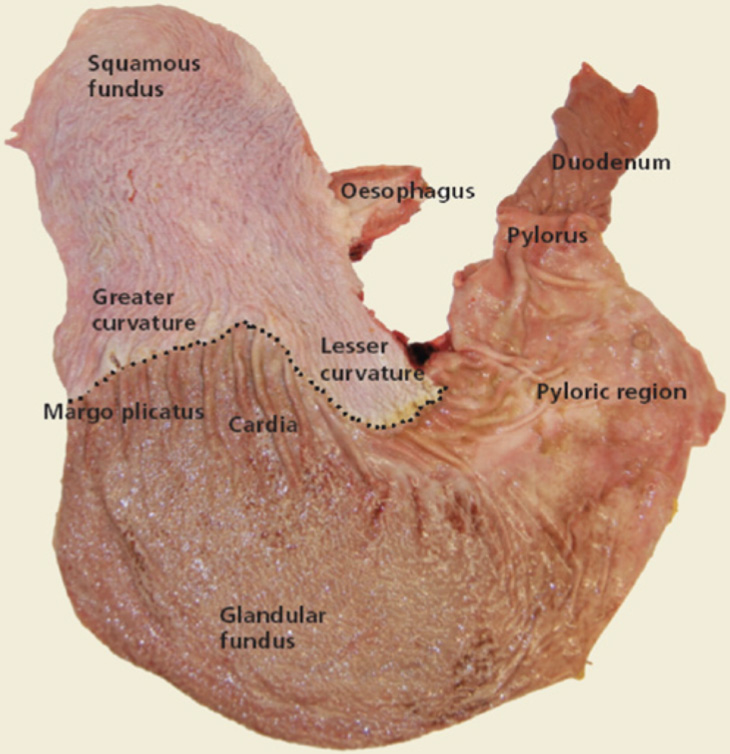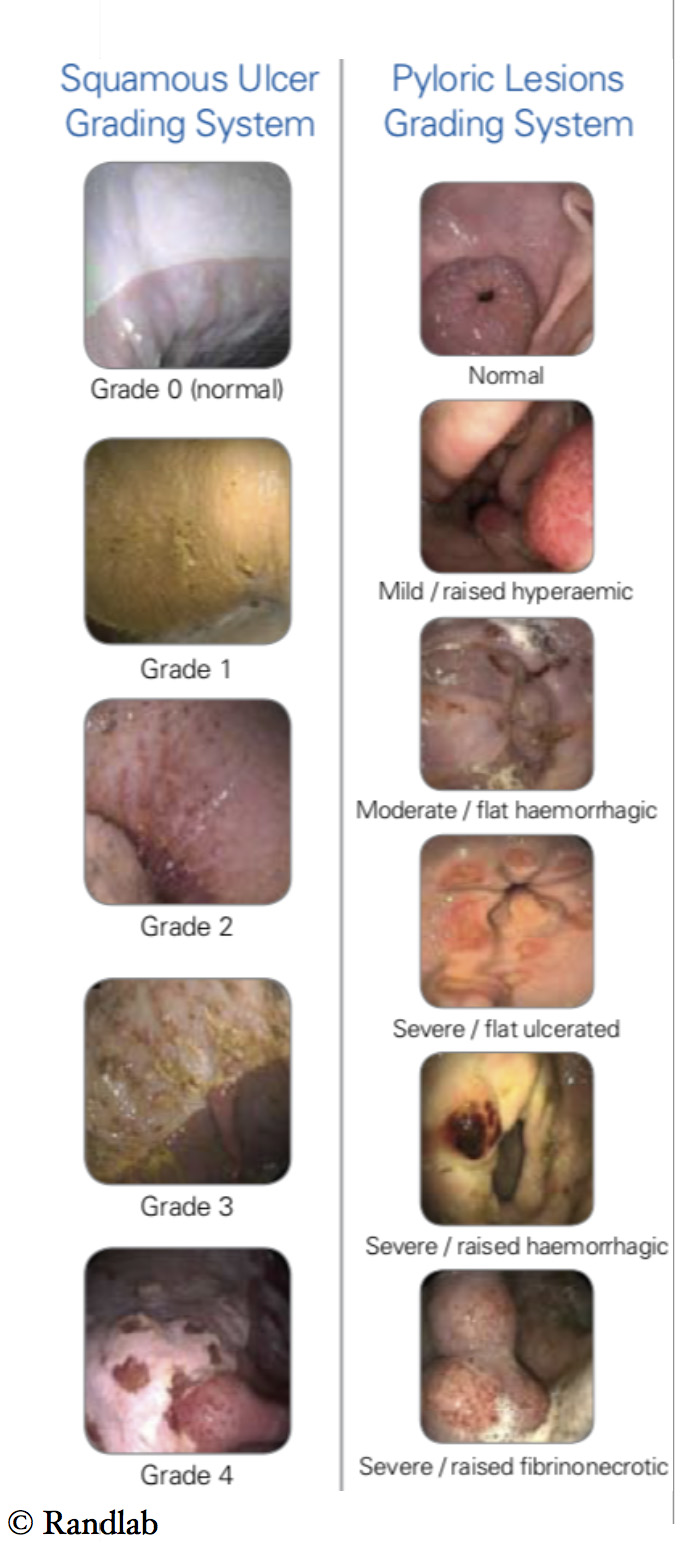GASTROSCOPY MONTH
Book your horse in for routine gastroscopy in the next month and receive a 50% discount off the price of the scope! Make sure to enquire today so you don’t miss out on this great offer. Don’t forget, gastroscopy is the only definitive diagnosis!
HAS YOUR HORSE GOT ULCERS?
Did you know the prevalence of gastric ulceration varies with breed, use and level of training?
80 – 100% of thoroughbred race horses, up to 58% of show or sport horses, up to 59% of pleasure hoses and 66 – 93% of competing endurance horses have been found to have gastric ulceration.
Equine Gastric Ulcer Syndrome (EGUS) is an all-encompassing term to describe ulcers or erosions of either the squamous (upper) or glandular (lower) regions of the horse’s stomach.
In this picture of the inside of a horse stomach, the upper squamous mucosa and the lower glandular mucosa can be seen. Stomach acid usually covers the glandular mucosa whilst the squamous mucosa sits above the acid.
Ulceration of the squamous mucosa can be caused by excessive exposure of the squamous mucosa to gastric acid. Where as glandular mucosal disease is thought to be caused by breakdown of the normal defence mechanisms that protect the glandular mucosa from acidic gastric contents.
Gastric ulceration can cause a number of symptoms including colic, poor performance, poor appetite, poor coat condition or behavioural changes. The only way to diagnose gastric ulceration is by gastroscopy.

Veterinary Grading Scale for Ulcers

A 3m endoscope allows us to examine the inside of the stomach. Gastroscopy is performed under standing sedation and takes around 30 minutes. We can examine the squamous mucosa, the glandular mucosa and the pylorus of the stomach. The first part of the small intestine can also be examined. These areas can all be affected by EGUS and it is important to examine them thoroughly.
Squamous mucosal lesions can be graded from 1 to 4.
Our 3m video endoscope allows excellent visualisation and assessment of your horse’s stomach. Treatment for gastric ulceration may include medications such as proton pump inhibitors (eg omeprazole) which reduce the production of acid in the stomach. Horses may improve clinically within a week, but treatment should be continued for at least 3 weeks to allow complete healing. A small number of horses may not completely heal within this time and stopping treatment too early may lead to a recurrence of clinical signs. In some severe cases, more than one medication may be required to heal the ulcers. A repeat gastroscope 4 weeks after starting treatment can eliminate guess work. We strongly recommend a re-examination so offer a discounted re-scoping fee.
Some management practices can help prevent horses from getting gastric ulcers. Allowing access to pasture turnout can have a protective effect, reduce grain to a minimum and allow access to roughage. A small amount of roughage fed 30 minutes before exercise can provide a fibre mat to reduce the amount of gastric acid splashing the squamous mucosa.
This month we will be offering discounted gastroscopes, please call on 8790 4922 to book your horse in. Horses must be fasted overnight and water withheld so we can visualise all areas of the stomach.
HAVE A SUGGESTION? WANT TO KNOW MORE ABOUT A PARTICULAR ISSUE? HAVE QUESTIONS FROM THIS ISSUE?
Get in touch with our Vet Team on reception@seeh.com.au